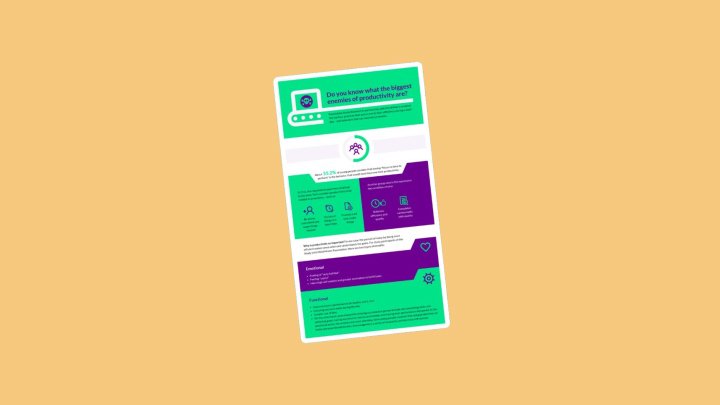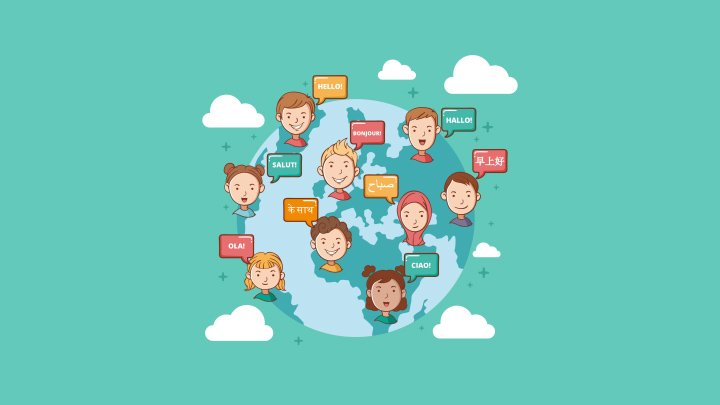In this article, we’ll look into a few ways how OCR Technology (Optical Character Recognition) can benefit Graphic Designers.
In the modern era, where technology for connecting people has advanced significantly, advertising and marketing have gained substantial traction.
People spend the majority of their time online, whether through their mobile phones or computers. Working online, reading the news, and shopping can all be done via the Internet.
In this era, where digital marketing has almost eclipsed traditional marketing, graphic designers and content writers hold an important place.
Graphic designers, in particular, are deeply involved in marketing, as they must create enticing visuals to attract customers and leave them with a positive impression.
Such importance and a high degree of involvement mean that graphic designers are often swamped with work and barely have any breathing room. This issue can be resolved by hiring more designers or by using tools and technology to ease the burden.
One such technology is OCR (Optical Character Recognition).
What Is OCR Technology?
OCR stands for optical character recognition. It is a technology that enables computers to extract text from digitally non-editable sources such as pictures, PDF documents, and physical documents.
By non-editable, we mean that text present in these sources cannot be interacted with using a normal word processor.
OCR has many applications and use cases. Some common examples are converting images to text, converting physical documents to digital ones, and in text-to-speech systems.
It has some uses for graphic designers as well.
Later in this article, we will look into some ways that graphic designers can use OCR for their benefit.
What Is Graphic Designing?
Graphic designing is a profession that deals with creating and modifying visually attractive designs for posters, websites, clothing, etc. It is considered a part of the fine arts, but it requires the usage of computers and photo editing software.
It has many uses in the marketing sector as making advertisements pretty to look at is very useful in converting leads.
How OCR Technology Is Valuable For Graphic Designers?
Now that we know what OCR and graphic designing are, let us check out how OCR is valuable for graphic designers.
1. Extracting Text From Uncopiable Files

Many graphic designers work as freelancers instead of being affiliated with one company. This allows them to work at their own convenience and has the potential to earn more money as well.
This means that they have to do all kinds of client correspondence online.
Naturally, this means that they get the details of their projects online as well. Usually, the clients send a PDF file to the designer with all the features and requirements that they want.
This includes all the text that they want to be written on their posters, flex boards, banners, or flags.
Graphic designing is a very technical job as it requires being proficient in using editing software which is pretty difficult to use.
They don’t have time to transcribe essays or mission statements from locked files. So, they can simply use an OCR to extract all that text in an editable format and use it easily.
The most common tool that can be used for that purpose is an image-to-text converter. Image-to-text converters are online tools that use OCR to extract text from pictures and non-editable documents like PDF and EPUB.
Clients want to protect the content they send to designers because they do not want their hard work to be stolen by others and unfortunately, that is a thing. So, they tend to protect their files to make them uncopiable.
With OCR/image-to-text conversion that can be easily dealt with.
2. Editing & Creating Infographics

Infographics are giant drawings that usually require quite a bit of scrolling on the reader’s part to completely peruse. They consist of drawings and diagrams paired with complementing text in order to convey some knowledge or a message effectively.
Reading the same thing as a blog post with big walls of text and reading it as an infographic can make a ton of difference in understanding the content.
Infographics are much more easily read and understood as they are more engaging than simple articles.
And wouldn’t you know it, who makes infographics? Graphic designers of course!
Infographics demand a lot of work and patience as they are much more complex than a simple poster or logo. Graphic designers can use OCR to help create and edit infographics in the following ways:
- Extracting text from an infographic that needs to be edited.
- Extracting text from a reference image to paraphrase and use in an infographic.
As it stands, not all freelance designers are of the same caliber. It is entirely possible that one designer makes an infographic but the client hires a different designer to edit it.
In this case, the designer can extract all the text to save it and reuse it while they touch up and edit the design.
Plenty of times clients attach reference works and designs that they want the graphic designer to take inspiration from. In that case, designers can extract text from them and rewrite it to use it in the new one.
3. Working With Different Languages

When someone works as a freelancer, they acquire clients from different parts of the world. It is entirely possible that an Asian person may hire an American or British designer to create a poster, infographic, or flex board.
However, often clients want their designs to contain text in their native language. Since many designers may not speak multiple languages, they rely on image-to-text converters to extract text written in foreign languages so that they can incorporate it into the design.
The value of OCR (Optical Character Recognition) becomes apparent when designers have to add a substantial amount of text to a design, as is the case with infographics.
Of course, designers usually receive a translation along with the text so that they can understand which diagrams should be paired with the content. Nevertheless, they still need to use OCR to utilize text written in a foreign language.
Conclusion
Graphic designing is an important part of marketing and advertising. Without good images that solicit positive reactions, marketing loses almost half of its effectiveness.
OCR is a technology that can help graphic designers in a number of scenarios. When they have to deal with a large amount of text, they can use OCR to extract and copy it instead of transcribing it by hand.
Designing images for foreign clients also becomes easier if designers can simply extract all the foreign language content with OCR instead of setting up a separate keyboard for that language.
Creating and editing infographics also becomes easier with the use of OCR as it can allow them to save text when editing or extracting text during research.
While the connection may not be that obvious and the use cases might not be very frequent, it is still beneficial for designers to know about these things on the off-chance that they have to deal with them.
Article By Muhammad Ali Raza
Muhammad Ali Raza is a writer who has written blogs about business, SEO, education, and technology. He is a prepared digital marketer with over 5 years of marketing experience and has led the way in digital marketing Strategies with many organizations and high-quality brands to generate more revenue through web-based promotional systems and implementation has been compiled.


